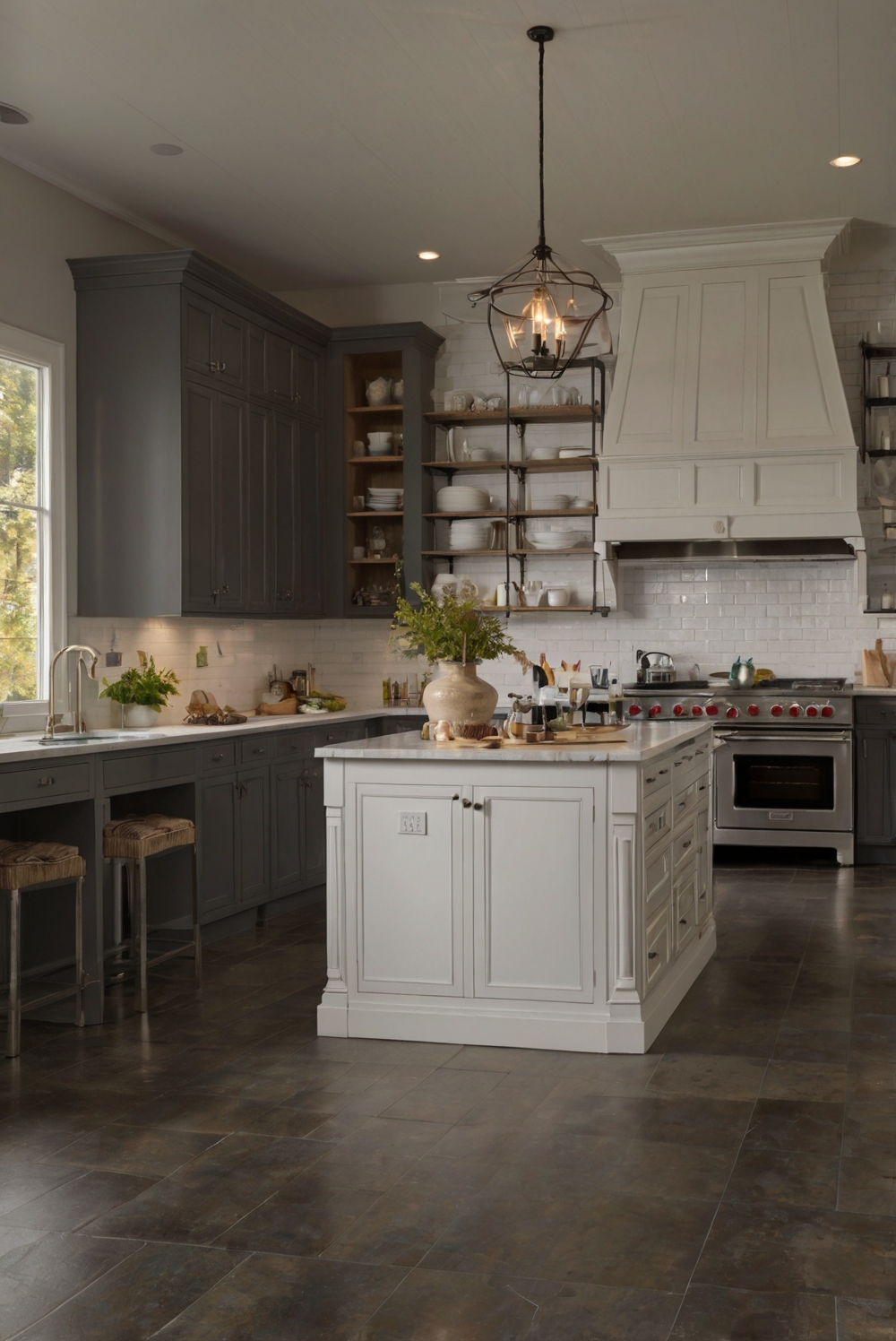Explore maintenance needs for various kitchen flooring options. From durable tiles to hardwood elegance, this guide covers tips and tricks for keeping your kitchen floor pristine.
The maintenance requirements for different kitchen flooring options vary depending on the material used.
For tiles: Regular sweeping and mopping are essential. Grout lines should be cleaned regularly to prevent dirt buildup. Periodic resealing is also recommended to maintain the shine and protect the grout.
For hardwood floors: Sweep or vacuum frequently to remove dust and debris. Avoid using excessive water when mopping to prevent damage to the wood. Refinishing may be required every few years to keep the floors looking new.
For vinyl flooring: Regular sweeping and mopping with a gentle cleaner is sufficient. Avoid using harsh chemicals that can damage the surface. Periodic waxing can help maintain the shine and durability of the vinyl.
For laminate flooring: Sweep or vacuum regularly to prevent scratches from dirt and debris. Avoid using excess water when cleaning to prevent warping. Placing rugs or mats in high-traffic areas can help protect the laminate from wear and tear.
It’s important to follow these maintenance routines to ensure your kitchen flooring lasts long and looks its best.
What are the maintenance requirements for different kitchen flooring options?
Tile Flooring:
– Tile flooring is a popular choice for kitchens due to its durability and water resistance.
– **The maintenance requirements for tile flooring include regular sweeping and mopping to keep it clean and free of debris.**
– **Grout lines should be sealed periodically to prevent staining and water damage.**
– To maintain the shine of the tiles, occasional polishing may be necessary.
– In case of any cracks or chipped tiles, they should be repaired promptly to prevent further damage.
– **Avoid using harsh chemicals or abrasive cleaners that can damage the tiles.**
– It is also recommended to use rugs or mats in high-traffic areas to protect the tiles from wear and tear.
Hardwood Flooring:
– Hardwood flooring adds warmth and elegance to a kitchen but requires more maintenance than other options.
– **Regular sweeping and vacuuming are essential to prevent dirt and debris from scratching the surface of the wood.**
– **Spills should be cleaned immediately to prevent staining and water damage.**
– Periodic polishing and refinishing may be necessary to maintain the shine and durability of the hardwood.
– **Avoid using excessive water or steam cleaners on hardwood floors as they can cause warping and damage.**
– It is also recommended to use furniture pads to prevent scratches from heavy furniture.
Laminate Flooring:
– Laminate flooring is a cost-effective option that mimics the look of hardwood or tile.
– **Maintenance requirements for laminate flooring include regular sweeping and mopping with a damp cloth.**
– **Avoid using excessive water or steam cleaners as they can cause the laminate to warp.**
– Spills should be cleaned promptly to prevent staining and damage to the laminate surface.
– It is important to use furniture pads to protect the laminate from scratches and dents caused by heavy furniture.
– **Avoid using abrasive cleaners or scrubbing pads that can damage the laminate finish.**
Vinyl Flooring:
– Vinyl flooring is a versatile and durable option for kitchens.
– **Maintenance requirements for vinyl flooring include regular sweeping and mopping with a mild detergent.**
– **Avoid using abrasive cleaners or harsh chemicals that can damage the vinyl surface.**
– Spills should be cleaned promptly to prevent staining and damage to the vinyl.
– It is important to use rugs or mats in high-traffic areas to protect the vinyl from wear and tear.
– **Avoid dragging heavy furniture across the vinyl surface to prevent scratches and damage.**
Cork Flooring:
– Cork flooring is a sustainable and comfortable option for kitchens.
– **Maintenance requirements for cork flooring include regular sweeping and damp mopping with a pH-balanced cleaner.**
– **Avoid using excessive water or steam cleaners on cork flooring as they can cause damage.**
– Spills should be cleaned promptly to prevent staining and damage to the cork surface.
– It is recommended to reseal the cork periodically to maintain its water resistance and durability.
– **Avoid dragging heavy furniture across the cork surface to prevent scratches and damage.**
In conclusion, each type of kitchen flooring option comes with its own set of maintenance requirements to ensure longevity and aesthetics. By following these maintenance tips and avoiding common pitfalls, you can keep your kitchen flooring looking great for years to come. Remember to consider the specific needs of your flooring type and adapt your cleaning routine accordingly.

